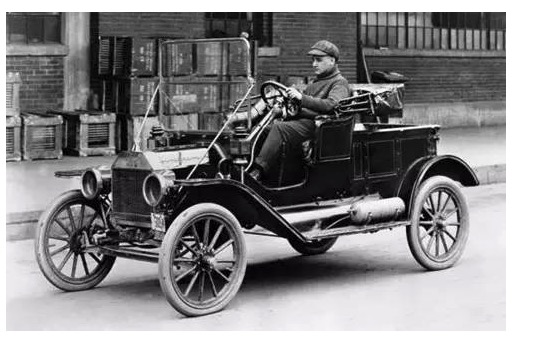Your biggest enemy is inertial thinking.
Author: Inventors quantify - small dreams, Created: 2017-02-13 10:47:35, Updated:Your biggest enemy is inertial thinking.

When I talk to the owners of some companies, I often hear them say that we are a results-oriented company. But later on, when I look at the way they do things, it is not results-oriented, but method-oriented.
- #### What is called method-oriented? When we receive a task, we first determine the nature of the task and then call the usual method to perform the work.
For example, in the new media distribution, the proposals of advertising companies are almost the same: KOL, event marketing, H5, viral video, WeChat, Weibo, etc.
In fact, these proposals are not, to be precise, proposals, they are lists of methods, not real solutions.
Why is this? Because Rolet's usual method is simple and finding a specific solution is complicated.
Sometimes, even if you really want to solve a problem, you can't because of habitual practices, because the problem may never be solved by conventional methods.
This inertial thinking also affects a particularly large group of people.
- ### 01 The lawn of Americans

Middle-class Americans love to have lawns on their doorsteps and spend a lot of time maintaining them. But what does a lawn mean to a family?
In fact, simple lawns are not fun, sometimes not as good as Japanese or Chinese garden designs, but the middle class in the United States likes to make a lawn, they do not like shrubs, they do not like big trees and flowers, they do not like small ponds, they do not like the door to the left is a date tree, the right is also a date tree.
Historical practice, in fact, formed the cult of strawberries among Europeans and Americans. Before the Industrial Revolution, strawberries were something only the nobility had, because without mechanization, the cost of maintenance was very high and there was no actual production, so only the nobility had strawberries.
This is where the European-American strawberry cult started, so now their families have a strawberry.
This is like the Jiangxi and Hunan regions, where it is still a matter of life and death to make soup, because only the rich can afford to eat salt. The Europeans like to eat this extremely unhealthy food, because only a very small part of Europe can grow sugarcane at the time of the introduction of sugarcane in Europe, so sugar is very precious, which forms a cult of sweet food, worship becomes a habit, and the habit strengthens people's dependence on sweet food.
Human breast milk is almost unsweetened, and if the sugar content of a child's diet is controlled in childhood, the child will not be very dependent on sweeteners when he grows up.
- ###02 Reverse thinking: from results to methods
So, in some ways, the power of habit is so terrible that it can lead you to a dead end.
Inertial thinking makes you ignore whether your method can achieve the goal, and habitually do it the way you did it, and the result is achieved?
So the one who does not follow the rules will be the first to be punished.

The Model T was perhaps the most insurmountable miracle in automotive history, as Ford reduced the price of a car from $4,700 in the early 20th century to $360 in 1910, when Ford produced more than half of the world's total production of cars.
Many people thought that Henry Ford had found a standard production process for assembling the flow line, which reduced costs, before launching the extremely low-priced T-type car. This is typical of inertial thinking, because the traditional pricing method is cost determination.
However, the old Ford did not think so, and his method was to let the price determine the cost. Ford calculated that only if the price of the car was reduced to this level, the American people would consume a lot of cars.
So he sets a price (i.e. a target) and then looks for a way to reduce the cost on a massive scale, which is the price that determines the cost.
It's a unique way of thinking, and I call it the outcome-to-method thinking, which is the way Ford did the miracle of the T-car over 100 years ago, but after all these years, we're still used to the method-to-outcome thinking.
- ### 03 Nagoya Airport
Nagoya Airport, Japan, is said to be the most profitable airport in Japan.
The airport was built for the World Expo of that year, and when they received the assignment, they studied the calculations and found that with the existing construction method, even if the construction began on the night of the assignment, it would not be possible to complete the construction before the World Expo.
The team responsible for the construction of the airport did not start work immediately, but instead began to meet to study how to build the airport as soon as possible.
After six months, the Japanese team made a detailed plan to significantly shorten the construction period, and the result was actually delivered before the Expo opened, saving 25% in costs, and of course, handing over the project to the Chinese, it will definitely be completed on time, yes.

For example, the construction of Nagoya Airport, at the time, required first filling the ground and then laying the ground for the construction of the airport. As a result, they converted to filling the ground and laying the ground for the construction of the airport, and the two construction cycles can overlap for more than a year and a half.
Also, the original runway had 20,000 tons of navigation lights, which had to be removed from the seals for each maintenance, and then reinstalled for each inspection, with each light maintained for 15 minutes.
As a result, the manufacturer of the guide light has changed the structure of the guide light, which can be inserted directly into a new guide light using the insertion structure, and the old one can be inspected directly in the factory, resulting in a reduction in the maintenance time of each guide light from 15 minutes to 1 minute.
The original headlamp was approved by the Japan Aviation Administration, but the manufacturer has significantly reduced the maintenance costs of the headlamp by changing the structure.
Setting goals first and then choosing the method of achieving them instead of doing things directly according to conventional practice makes Nagoya Airport the most profitable airport.
Moreover, Nagoya Airport believes that the airport's pursuit of safety, speed and profitability, rather than the pursuit of appearance and luxury, has also cut costs significantly.
- ### 04 Product manager package
Let's take another example, I was in the middle of a storm, and HR gave me a job to help design an ad for a product manager, because we were short of product managers at the time.

My thought was, since it's been so long since we've had the chance to find the right product manager through the traditional channels, can we do another ad and get it?
So we broke with the old practice and we teamed up with West Chao Chicken Chop to launch a product manager package at all their chain restaurants (because West Chao's restaurant distribution coincides with that of an internet startup in Beijing) where you can eat a product manager package for 1 yuan if you bring your product manager's business card.
As a result, we collected a lot of product manager business cards and had HR call and dig a hole.
How long would you wait if you used the traditional method?
From the outcome to the method, the way we think is that when we are encouraged to do something, we first think about it:
How deeply are we influenced by inertial thinking and methods? Can we try to break through their limits? Can we go backwards from the outcome and find the right approach?
Translated from The Wall Street Club
- Eight well-known crypto hedge EA's review of strategy
- Reduce worthless trades and cherish familiar opportunities!
- The 10th currency war in history!
- Experience with futures trading
- What does support vector machine (SVM) mean?
- New timing and strategy in options trading
- High-frequency strategy: exchange of applications for cabbage harvesters
- Leaving school for a low level of hard work is a trap
- Talk about network trading law
- 2.10.2 Variable values in the API documentation
- Foolish trading: the power of rules
- 2.7.1 Windows 32-bit system Python 2.7 environment Install the talib index library
- Not support market order error
- Inventors describe the mechanism of quantitative analogue level retesting
- The K-Line is not compatible with mainstream channels.
- Quantitative trading "reverse investment from the mean to the return"
- I've been reading a lot about equity, counter-equity, the profit formula, the gambler's loss theorem (very inspiring).
- The Deutsche Bank study notes several common mistakes in the quantification strategy
- Bitcoin contracts for okcoin: the dollar-renminbi exchange rate problem
- The more complex the method, the more it deviates from the essence of the transaction.